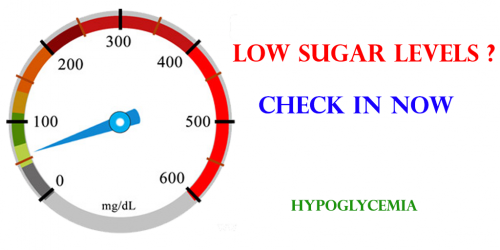Hypoglycemia
When low blood sugar drops below normal levels, it’s called hypoglycemia. When your blood sugar dips, it can leave you feeling hungry, shaky, and lightheaded. This can happen to anyone who hasn’t eaten in several hours.
You can lower your chances of low blood sugar—and treat it when it occurs—with some simple steps.
Know the Symptoms of low blood suger
Sugar, or glucose, is a key source of energy for the body. When blood sugar drops, you may get these symptoms:
- Hunger
- Shakiness
- Sweating
- Dizziness
- Lightheadedness
- Confusion
- Anxiety
- Feeling tired or sleepy
- Headache
What You Can Do to increase low to normal suger level
Most of the sugar or glucose in your blood comes from carbohydrates. Carbohydrates are the sugars and starches in grains, beans, vegetables, fruit, milk and milk products, honey, and sugar. If you don’t have diabetes and you’re feeling the unpleasant effects of a drop in blood sugar, eat or drink something with carbohydrates. Good choices are a piece of fruit, a few whole wheat crackers, a glass of milk, or a carton of yogurt.
In people with diabetes
hypoglycemia can come on suddenly and needs to be treated right away so it doesn’t get worse. Eat or drink a quickly digested carbohydrate food, such as:
- ½ cup fruit juice
- ½ cup of a regular soft drink (not a diet soda)
- 1 cup of milk
- 5 or 6 hard candies
- 4 or 5 saltine crackers
- 2 tablespoons of raisins
- 3 to 4 teaspoons of sugar or honey
- 3 or 4 glucose tablets or a serving of glucose gel



Post your comment